Flight BeagleBoard at an altitude of 36 km!
- Transfer

Introduction
I am glad to inform you that BeagleBoard is able to work in extreme conditions at zero pressure and low temperatures, which take place at an altitude of 36 km. As part of the project, I sent BeagleBoard to the stratosphere to receive photos and send them in real time using a simple, small radio transmitter. In this post I am going to tell you about what and how was done with the application of some images, scripts and other things that I used.
Project “Space Camera Live 1”
With this launch, we managed to get live broadcast from the stratosphere. We received the largest, high-altitude and fastest photographs that were ever sent from the stratosphere by amateurs using a 10 mW radio transmitter (as the consumption of a single LED). We had two payloads raised with a helium ball to a maximum height of almost 36 km. During the flight, images and information from the GPS premiere were transmitted and received in real time from the probe. Anyone had the opportunity to accept this information and immediately publish it on public display.
All scripts, PCB, etc. are available on the project page.
Flight statistics
- Price - € 150 (cost of helium and ball)
- Launch - 12:36 (11-09-2011 Delft Netherlands)
- Landing - 15:00 (09/11/2011 Heereveen Friesland)
- The ball burst at 14:26
- Found at 15:55
- Flight duration 2 hours 24 minutes
- Max. flight altitude 35.748 meters
- Total weight ~ 1300 gr.
- Main payload - Beagleboard / GPS / GPRS / Webcam / Radio
- Additional payload - Arduino / GPS / GPRS / Cutdown (Packing Data, approx. Transl.)
- Real-time data compression
- Total received 1731 photos
- Of these, 123 photos were sent in real time.
- Total received in real time 119 photos
- 6 million bits received in real time
- Max. data transfer rate 1,200 bps.
- The largest image sent in real time - 800x592 px
- The distance traveled (3D) - 205 km.
- Minimum temperature inside the probe + 5 ° C
- Radio transmitter power 10mW (434.653MHz, 8n2)
Video
Images
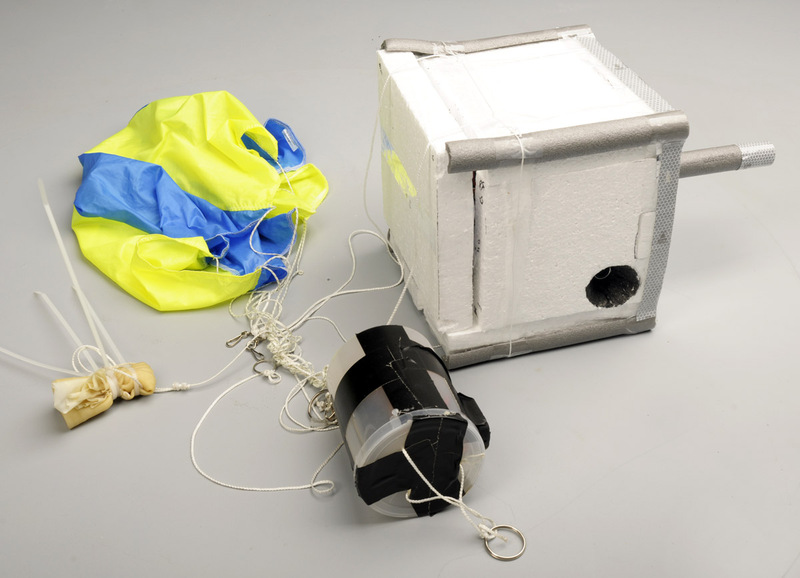
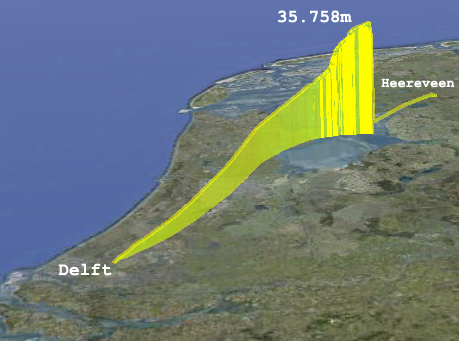
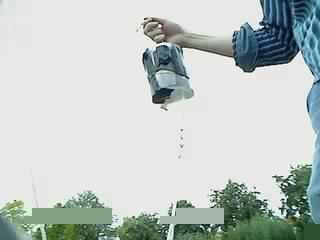


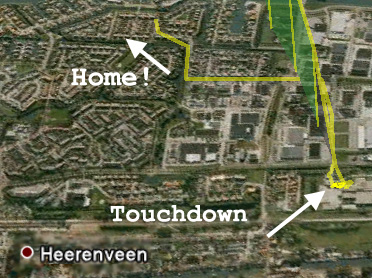
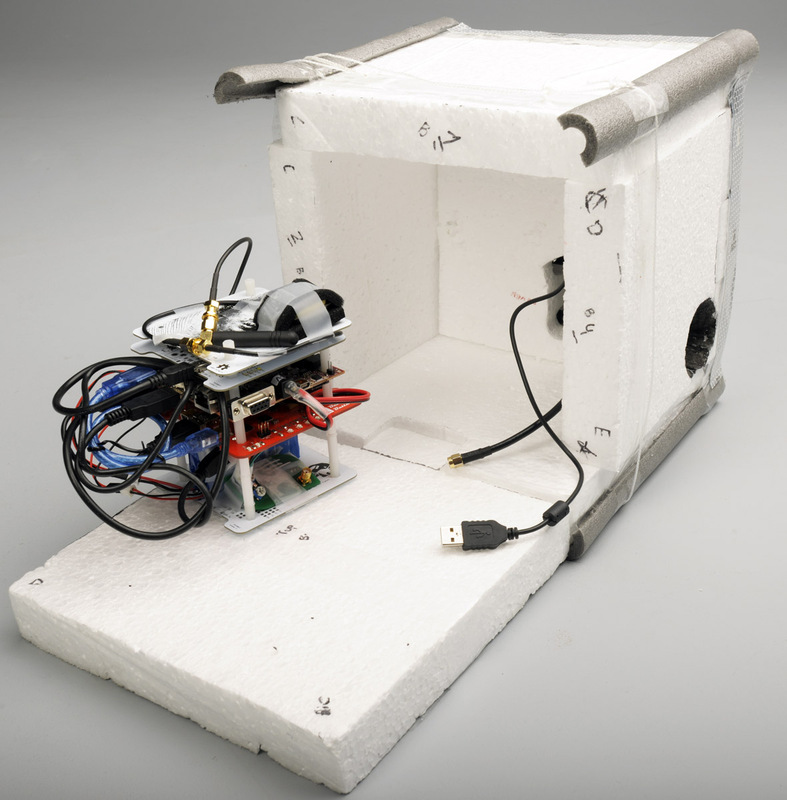

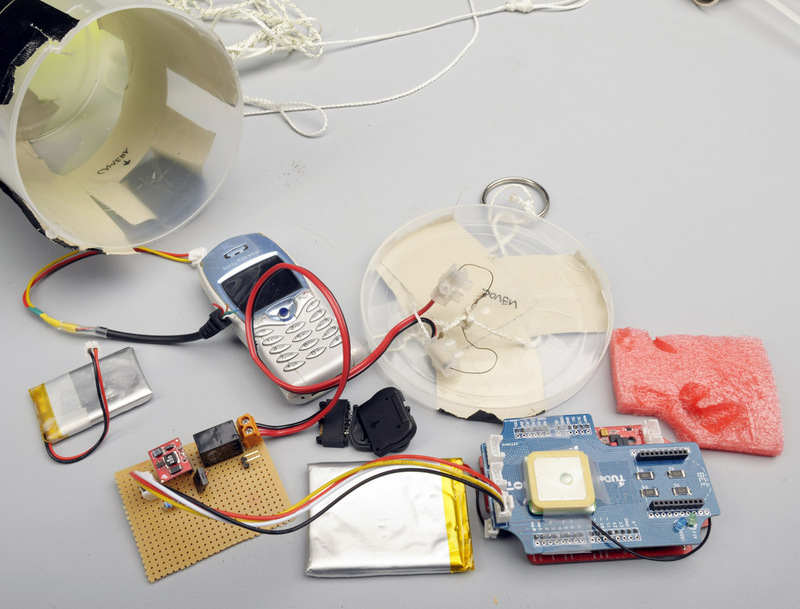
1700 photos taken, 123 sent
Sending one photo took 10 to 60 seconds. While one photo was sent, the webcam managed to take several pictures. Which one to send next? Last? No. It was logical to send the best shot. Therefore, I compiled an algorithm that selected the best image according to two criteria: 1) the average value in grayscale and 2) the 8-bit standard deviation from 30 ideal shots (see. Algorithm for choosing a high-quality shot ).
Below is the data from the additional unit (Ardruino).
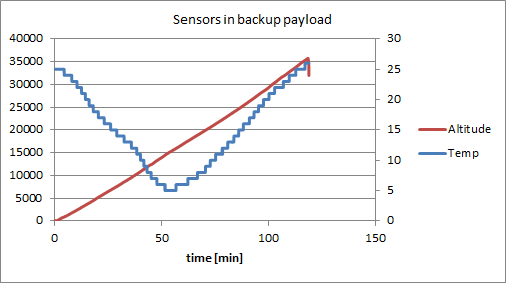
According to the readings of the sensors, we can say that at really low temperature the modules were not for long. The minimum temperature inside the main (thermally insulated) module with BeagleBoard was + 5 ° C. At this temperature (judging by the graphs below) BeagleBoard worked only 5-10 minutes.
Beagleboard and optional parts
To power the BeagleBoard, I made a Beagle Battery module. You can read how I did it here ( not translated yet, approx. Transl. ).
A GPS / GPRS module was also made, which you can read about here ( not translated yet, approx. Transl. ).
Components Used

Appearance of the ball, main and additional modules

From translator
I must immediately write that the translation is free. The request of the “grammar” is not to kick much.
Further ... In the section “1700 photos taken, 123 sent” I wrote about myself how much the BeagleBoard was at a low temperature. In fact, the duration is small and the temperature is too high to judge the survivability of the beagle. In addition, BeagleBoard, as far as I know, comes with a commercial temperature range (from 0 to +70 degrees Celsius). Are there any industrial-grade BeagleBoard analogues with an operating temperature range from -40 to +70 degrees that can be delivered to Russia? I don’t know for sure yet. There are processor modules (for example, “Mini 8100 PC”) built on the same processor platform. But this is not the same thing. It is difficult to work with the bare module “on the knee” (you need to fix the connectors yourself). I specifically recognized at terraelectronica the possibility of delivering processor modules on the TI OMAP3530 to Russia. ModulesThe MINI 8100 PC was promised to be delivered in 5-6 months. The long term is explained by the fact that TI picks up industrial product orders for a very long time.
So, I conclude that the project used a board with a temperature range from 0 to +70 degrees. Therefore, proper operation at sub-zero temperatures is not guaranteed. If the probe lingered at an altitude of about 15 km. long enough, and inside the main module the temperature would drop below zero centigrade, then with a high probability BeagleBoard would get in trouble.
And in the end, about links to related posts. There are two (or rather even three) related articles: descriptions of the autonomous power supply modules (prototype and “production” versions), as well as a description of the GPS / GPRS module. It is also quite voluminous materials. If there is interest on the part of the readers and the opportunity for me, then I will also translate them.
THANK YOU FOR ATTENTION! Your comments ...
References
Algorithm for choosing a high-quality image
Making a proper antenna.
Making a 'hot-wire' cutdown mechanism.
Cutting your styrofoam.
[BeagleBoard] Beagle Battery Prototype
[BeagleBoard] Beagle Battery Module in Production
[Linux] Beagleboard GPS SMS Cellphone Module ready!
Scripts can be downloaded on the original page
